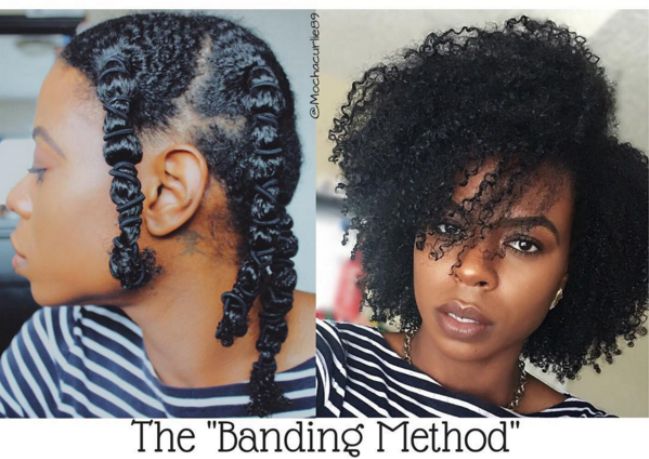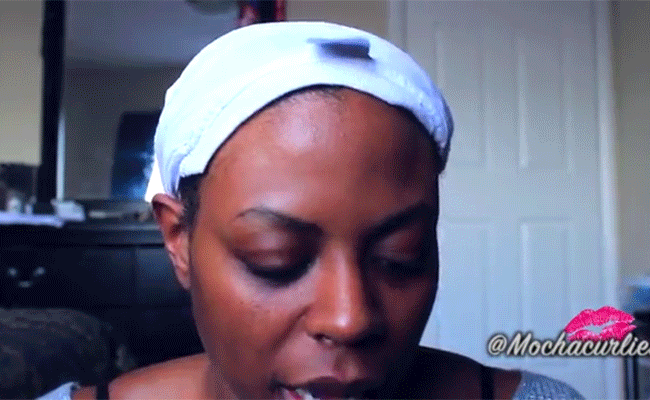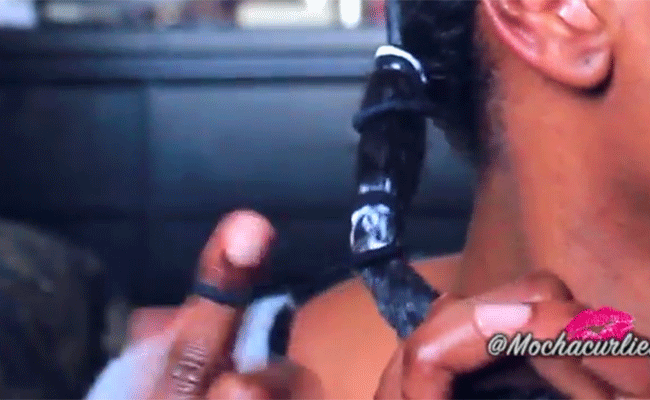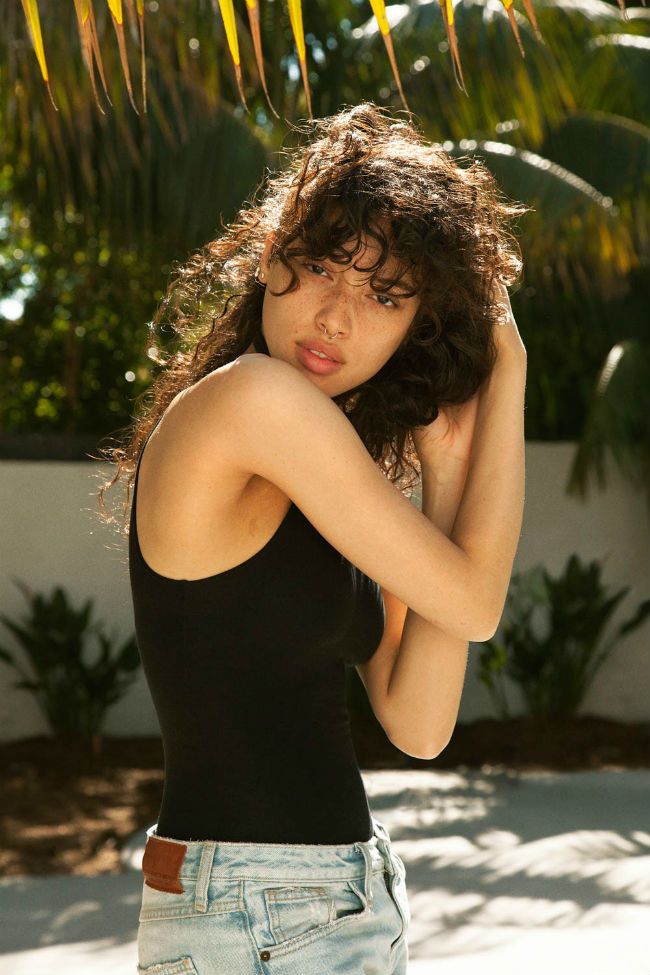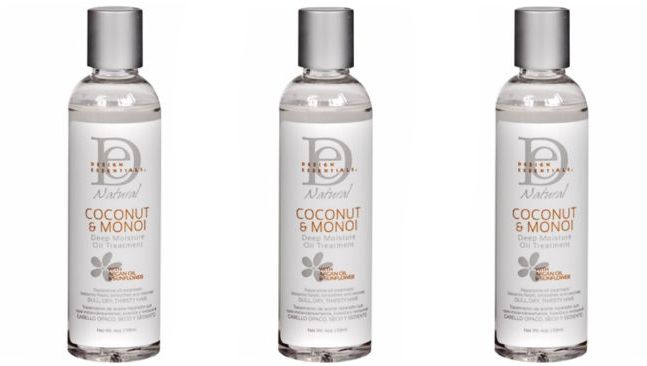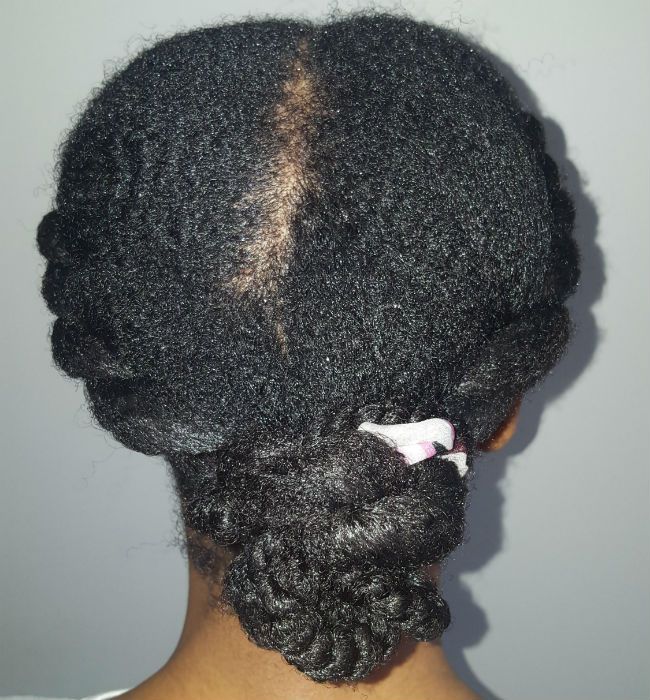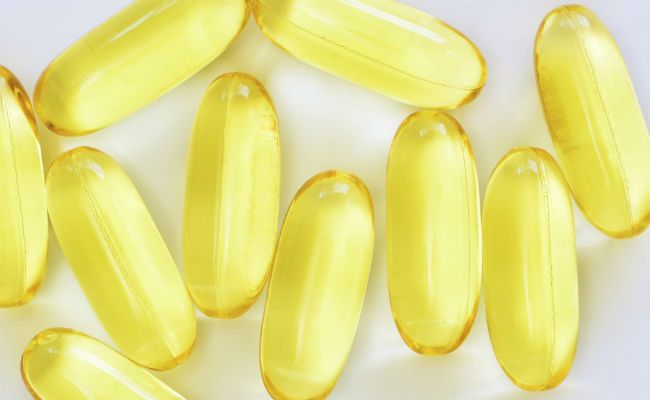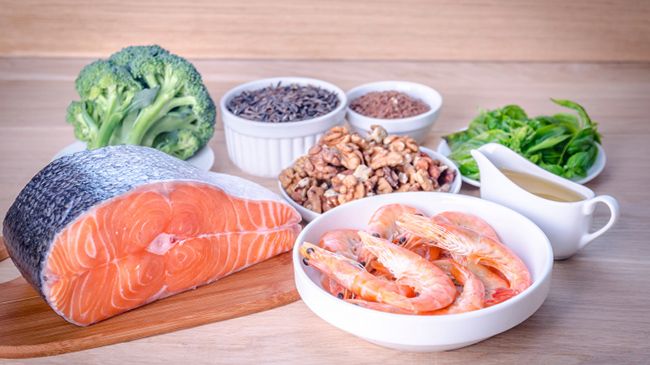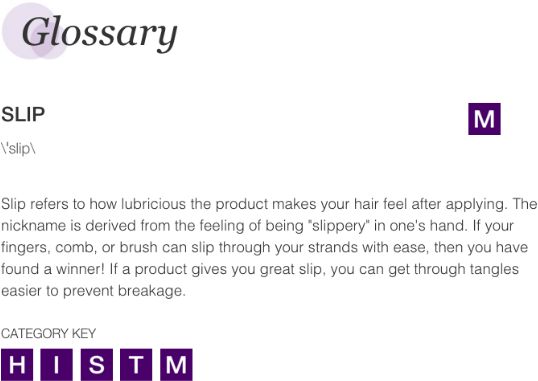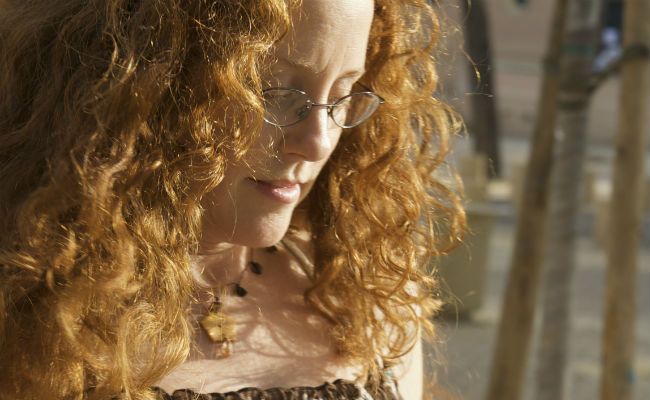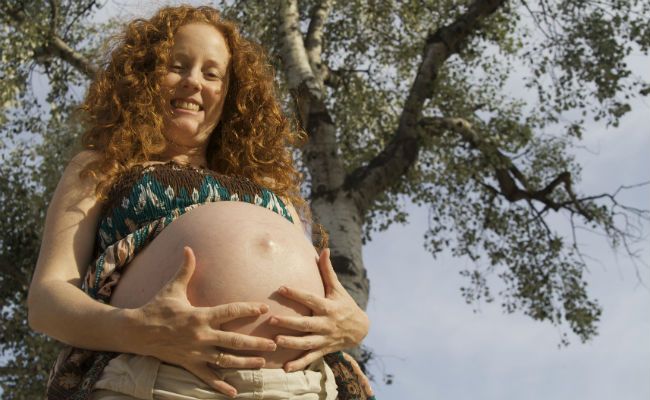Search Results: Vanessa Osbourne

As a woman of color, I have to be mindful of the way I navigate corporate America in order to be viewed as professional. There are unwritten rules.
Recently, writer Michelle Gadsen-Williams came forward about the struggle she faced while wearing natural hair as an executive of a Fortune 500 company. Michelle’s story is similar to the story of many naturals. For years and years she would flat iron her hair as a part of her high powered executive uniform. Then things changed. A medical scare which lead to surgery followed by soreness caused Michelle to be unable to flat iron her hair as she normally would. So began her return to natural; Williams allowed her curls their time in the sun.
I’ll admit now that I was afraid: first, of the conversations it would spark with my peers and superiors
I’ll admit now that I was afraid: first, of the conversations it would spark with my peers and superiors, both Black and white, and second, of the deeply ingrained racial issues regarding what constitutes “polished”—I just wasn’t prepared to address them at the time.
As many of us naturals can relate to some of the doubts that Michelle experienced when she went back to work with her new look, I find her story especially insightful.
When I went natural some six years ago, coworkers constantly asked me if I was going to start wearing dreadlocks. Sometimes they’d tell me repeatedly about their preference of my relaxed hair. I was always concerned about my hair growing frizzy throughout the day and not looking as polished as possible.
I am not an executive–I am a paint chemist and I work in manufacturing facilities were production workers are allowed to wear jeans. However, I was expected to dress like a member of the administrative staff. With the ever present risk of paint spilling and splashing all over me, I would’ve loved wearing jeans with my steel-toed boots–but of course, that would have been frowned upon. I was expected to look professional regardless of the messy nature of my job. Adding natural hair to the mix made me feel especially self-conscious.
No one is going to come out and tell you that your hairstyle is a problem. You will likely figure it out over time, when you’re continuously passed over for a job, a promotion, or a particular assignment. If you have aspirations to reach the next level of leadership, you have to play ball—something I did for years.
Some naturals work in environments that reward hard work and dedication while paying no attention at all to how your hair is styled; I’m not certain if these naturals are in the majority.
Natural hair tends to attract attention. That’s just how it is. Sadly, often time our own friends and family are the ones that try to undermine our decision to embrace our natural self and while I’m unwilling to speculate about the reasons behind the reluctance to let us just be as we are, there is a lot of truth behind the idea that the longer you are natural the less you care about what others think about your hair. I don’t think you ever stop caring though, because we are social beings that want other people to like us. Natural hair is a lot more acceptable now than in the past but there are people who still believe that it has no place in the world of work.
And then a Black female colleague stated, ‘In my opinion, some hairstyles are just not appropriate for the workplace.’ I was deflated.
As many of us have our own versions of Michelle’s story, it is great to remember that we are not alone.
That’s what has always been great about the natural hair community–the camaraderie and support that exists has bolstered many of us to persevere when things get tough. We are here where we are free to be whomever we choose to be.
We’d love to hear about your experiences.
Hate it or love it, frizz is a fact of life for those of us with curly and kinky hair types.
Embracing frizz is one thing, but promoting it is another thing entirely.
Try as we might, it is next to impossible to completely eliminate frizz all day, every day. Nevertheless, there are things that can be done to keep it at a minimum. Your best bet in combatting frizz is to understand what causes it and controlling these factors as simply using products alone won’t do. As with every problem, you always want to get to the root cause.
Frizz occurs when hair is dry and lacks moisture.
The first rule of keeping hair hydrated is to keep your body hydrated from within. Once that happens, you need to maintain it by applying moisturizers and deep conditioning regularly. Protecting your curls by sleeping on satin or wearing a bonnet is also important for combatting frizz. Satin reduces friction on the strands which keeps the cuticles from rubbing on each other so that they remain closed and frizz is minimized.
Note also that chemical processes such as coloring the hair may result in frizz
Note also that chemical processes such as coloring the hair may result in frizz, as the cuticle layer of the hair has to be opened in order for the color to be deposited within the hair shaft. Unless the cuticle is returned to a closed position by the use of products that restores the hair’s pH balance, dryness and frizz will occur. Any process that alters the compromises the hair’s protein structure, such as the addition of heat, may also result in fizz.
Certain ingredients can tame frizz due to their ability to:
- restore the hair’s pH and close the cuticles
- add weight to the hair and so keep the cuticle layer flat
- smooth the cuticle layer down, creating a frizz-free surface on the hair strand.
Below are some natural ingredients to look for in your natural hair products.
Honey
Honey has many amazing benefits for the hair. Its smooth, thick consistency coats the hair to smooth the cuticles of the hair and keep them closed. Honey is also an emollient (softens hair”> and a humectant (pulls moisture into hair”> which makes it a powerful tool in keeping hair hydrated and moisturized and making hair manageable.
Honey also imparts shine to the hair. Look for honey in your products or click here for a DIY frizz buster you can try at home and here for more honey hair treatments.
Aloe vera
Aloe vera has the ability to seal the cuticle by restoring the pH of the hair. Once your cuticles are closed, frizz is history and shine is amplified. Aloe vera also has humectant properties, is great for the scalp and makes detangling the hair a lot easier. Here are 6 ways to use aloe vera in your hair regimen.
Argan oil
Argan oil is a great frizz fighter and does so without weighing down the hair. Click here to find out more about argan oil.
Herbs
Marshmallow root, slippery elm, and flaxseed are herbs that form gelatinous substances when infused or boiled in water. The gel formed from these herbs provide amazing slip, smooths and coats the strands of hair taming frizz and keeping cuticles closed. These herbs also make detangling easier.
If you live in humid climates, you can find frizz taming tips just for you by clicking here. Share with us your proven frizz fighting methods.
Butter gels are creamy blends that provide moisture as well as a soft hold.
While moisture and soft hold are the primary benefits of butter gels, other common benefits across formulations include adding shine and reducing frizz. Some even nourish dry scalp.
What kind of style can I create with a butter gel?
Depending on your individual hair type and texture, butter gels may provide you with enough definition to be used as a wash and go styler, especially if you prefer hair with more movement and body that super definition. However, it’s more likely that you will need to use another styler that provides more definition and hold as butter gels are meant to be used like traditional gels are typically used.
For less defined textures, butter gels are great for installing protective styles, doing braid-outs and twist-outs. For those with looser curl patterns, butter gels are great for wash-and-gos. Some trial and error may be necessary to figure out how a butter gel fits into your particular hair regimen.
Do I still need to cocktail if I style with a butter gel?
It’s unnecessary to use multiple products to achieve a particular look or style.
How do I know if my hair will benefit from using a butter gel?
Butter gels are perhaps more beneficial for kinkier textures that need moisture but that also require a bit of hold, added shine and frizz control.
The attributes of a butter gel
This styler is typically water or aloe vera based. While aloe vera is not the primary ingredient, it still forms a part of the product composition. Aloe vera is very beneficial to hair of all types. Some of these benefits include:
-
balancing pH levels
-
healing the scalp
-
providing moisture
-
reducing frizz
-
fighting dandruff
-
easier hair detangling
Aloe vera gel provides definition and hold. Kinkier and coilier haired naturals, however, may require more than what it can provide. It really depends on hair type and personal preference. There are a number of butter gels available and you are very likely to find one that suits your budget, regimen and hair type. A few examples of butter gels include:
- Cantu Shea Butter Moisturizing Twist & Lock Gel
- Camille Rose Naturals Aloe Whipped Butter Gel
- curLUXE Naturals Twist & Define Cream
Do you use a butter gel in your wash-and-go regimen?
Shrinkage is one of the common struggles those with textured hair encounter. While generally a sign of healthy hair, shrinkage also sometimes leads to the formation of knots and tangles, causing breakage–or at least marathon detangling sessions. (Sign me up for neither, thank you.”> There are a number of ways to stretch your natural hair; one is by banding. This involves the use of hair ties or ponytail holders to gently stretch the hair by holding the curls in an elongated position as they dry.
Is the Banding Method for you?
Banding can yield different looking results depending on your texture and curl pattern. You may end up with looser curls or waves or blow out like straightness. As always a bit of experimentation might be necessary to figure out the best way to achieve the look you like best since each head of hair is unique.
Begin with hair that has been freshly washed, conditioned and detangled.
Hair should be damp, not soaking wet.
Apply your leave-in conditioner, seal and add your moisturizer or styler of choice.
Follow the routine that works best for you when it comes to moisturizing your hair post wash.
Section hair into medium-sized, workable sections as appropriated for the length and density of your hair.
The thicker or shorter your hair, the more sections you will need. Use whatever hair ties you like. Goody Goody Ouchless Comfort Ponytailer Black 14 CT, Goody Goody Striped Headwraps, 10 CT, Goody Goody Girls Ouchless Terry PonyOs, 24 CT or similar products are all examples of ponytail holders that you may use.
Wrap your ponytail holder twice around the base of your section.
Move your fingers down about an inch and wrap the band around the hair at that section.
Continue wrapping the ponytail holder around the length of the section as you work your way down from the root to the ends of the section.
Several hair ties may be required depending on the length of your hair.
Blot any extra product from your sections–this will help cut down on your drying time.
Repeat until all your sections have been banded. Allow to hair to air dry thoroughly before removing the ponytail holders.
Other important things to note
- The closer you wrap the hair tie along the length of the hair the more your hair will stretch and the less of your initial curl pattern will remain at the end of the banding process.
- The larger you make each section of hair the longer that section will take to dry. This is also one of the reasons you want to start with damp and not soaking wet hair.
- Be careful not to wrap the hair too lightly as you risk breakage and damage to the hair by doing so.
Watch a full banding tutorial by YouTube creator, AshleyMichelle:
Have you tried banding your hair to combat shrinkage before? What is your go to method for stretching your curls?
If you’ve been natural long enough, you’ve seen a product or ingredient being praised–and vilified.
What was once sent from above becomes the most taboo of products. In the heat of the controversy, facts and actual useful information about the product get lost. Baking soda is one such product. Baking soda is a workhorse product that can perform a variety of functions in the home and personal care. Add it to your toothpaste for a whiter, brighter smile or use it in your laundry to help clean and freshen your clothes. There are many uses for this very inexpensive and accessible item. Here’s why you should add it to your grocery list and start using it as an occasional clarifier for your hair.
Strength: Exfoliation for a deep clean
Baking soda has the ability to absorb grease and has a gritty texture that makes it great for gentle exfoliation of the scalp. Known also as sodium bicarbonate or bicarbonate of soda, baking soda has a high pH which, when used on hair, will open the cuticles of the hair shaft to allow moisture in. While this can be a good thing, it is possible to have too much of a good thing. The ideal situation is to follow your baking soda cleanser with an acidic product that will allow the cuticles of the hair to return to a closed position.
Strength: pH balancing capabilities
Apple cider vinegar, aloe vera juice or gel, or a pH-balanced product (4.5-5.5″> are all ideal for using with baking soda to balance the pH level of your hair. Open cuticles lead to tangles, knots, breakage, frizz and dull hair. Closed cuticles seal in moisture, reduce frizz and the associated knot, tangles and breakage that can result. Closed cuticles also reflect light giving hair a healthy looking shine.
Make your own DIY baking soda clarifier by following the simple recipe below.
- ½ cup baking soda
- 1 cup warm water
Stir mixture until baking soda has dissolved. Massage into hair and scalp and rinse hair thoroughly. Follow with an acidic product to restore hair’s normal pH level.
Do not forget to restore your pH level
It is important to remember that there may be a period of transition as your hair adapts to baking soda as a clarifier. Allow your hair a few sessions to assess if baking soda as a clarifier is the right product for you. There are benefits to using baking soda as a clarifier: it’s cheap, will remove all the oil, grease and impurities from hair and scalp and will open the cuticles to let moisture in.
Open cuticles are not a bad thing, in fact, the reason we use heat when we deep condition to open the cuticles so that the beneficial ingredients have an easier time getting within the hair shaft. The key is to ensure you return the cuticles to a closed position afterwards. If that’s not done, then you could experience porous, fragile or dry hair that is prone to breakage.
Read: Pros & Cons of Baking Soda Shampoo
I cannot stress enough that you risk damage to your hair when using baking soda to cleanse it, if you do not follow up with a product of low pH that will restore the hair to its natural pH levels and close the cuticles that were opened by the alkalinity of baking soda.
Do you seek to adopt a low maintenance approach to taking care of their natural hair? You might be a lazy natural. Blogger of Tribe Called Curl (and NaturallyCurly contributor“> Imani Dawson coined the term Lazy Natural and even though we work in a hair centric office it resonated deeply with us. The aim of a lazy natural routine is to reduce the amount of time spent doing your hair, and lazy naturals typically, but not always, use only a few products for maintenance and styling. Here are some things that only lazy naturals understand.
1. It’s best to keep things simple.
Keeping things simple is the best foundation for a hair regimen. It is also best for your social life and sanity. Less time spent on their hair means more time for family, friends and hobbies. A simple regimen makes it easy to identify the products and practices that are effective for your hair type and the ones that are less so. A simple regimen makes problems easier to recognize because there are less variables involved, therefore it’s easier to pinpoint where an issue may lie. Keeping it simple can also save you money (since you are more likely to use less products in this case”> and lots of trial and error though the latter is often a fact of life with natural hair.
2. If you don’t have the time or energy, just don’t bother.
Dealing with textured hair takes time. You can’t just rush through a detangling session without causing damage to your hair. While it is often necessary to exert oneself instead of giving in to ennui, if, at any particular instance, you have not the mental inclination to deal with your hair, it may prove more beneficial to you and your hair to put off dealing with it until you feel more able to dedicate the patience, time and care necessary.
A lazy natural hair routine doesn’t have to be an unhealthy routine.
3. A lazy natural hair routine doesn’t have to be an unhealthy routine.
Adopting a lazy natural approach to your natural hair is not the same as neglecting it. However, the less you manipulate your hair the better. Cutting back on manipulation is key to any lazy natural routine and it’s also paramount when it comes to retaining length. A lazy natural routine focuses on maintaining high levels of moisture and reducing manipulation.
4. Products that do double duty are the bees knees.
Any product that can do two (or more”> things at once, such as a moisturizer that provides moisturize, enough hold for styling and or definition is going to eliminate steps from your regimen and save you time and money. That’s the trifecta right there. Lazy naturals understand how important such products are in a hair regimen.
5. Having a go to style is a must.
You always need that one style that flatters your face and can work under most conditions if not all in the event that you have a major hair style fail or just a regular bad hair day. Having a fall back style can save you from a lot of anxiety when it comes to styling your hair for special events or when trying a style for the first step it gives you peace of mind to know that there’s a Plan B in your pocket.
6. Invest in quality tools.
Part of being a lazy natural is being able to rely on things working the way they should thereby giving you the consistent results that you want. Ponytail holders snapping, hair pins losing their plastic tips and combs and brushes with seams snagging on your hair at every pass are not only sources of potential damage, but they make tasks more time consuming which is the very thing lazy naturals cannot abide. Investing in quality tools make more long term financial sense and your hair tools will perform consistently and reliably, which is one less thing to worry about.
7. Being a lazy naturals does not make you a lazy person.
In fact, low maintenance would probably be a better word. Lazy naturals usually lead very busy lives and cannot find hours to dedicate to lengthy hair routines. Most lazy naturals become lazy naturals as their hair becomes longer requiring that much more time for cleansing, and detangling and styling which is the rationale behind simplifying their hair regimen. After all, there’s only so many hours in a day.
Are you a lazy natural?
Design Essentials Natural Coconut and Monoi Deep Moisture Oil Treatment is supposed breathe life back into dull, dry and thirsty hair.
Quite frankly, I feel as though it sucked the life from mine. The packaging, which I really like, claims that the product is a “reparative oil treatment that instantly heals, smooths and restores” hair. When applied to damp hair, it does feel as though the product is doing just that. Once my hair dried, however, the results were something else entirely.
I received this product as part of a care package from NaturallyCurly (this review is not sponsored”>. It is available in Target stores; the online retail price is listed at about $13 for a 4 oz bottle.
Key ingredients
The first five ingredients of this deep moisture oil treatment are neopentyl glycol diheptanoate and isododecane, ethylene/propylene/styrene copolymer, butylene/ethylene/styrene copolymer, cocos nucifera (coconut oil”>, gardenia tahitensis (tiare”> flower extract and argania spinosa (argan oil”>.
Now I’m an industrial paint chemist with over 10 years of experience and I’m still a bit baffled by the ingredients list. I’m not sure if some of these names should be read as one or two separate ingredients. Needless to say, the list seems complicated to me–it’s something I think the manufacturers should definitely review. The product has no parabens, gluten, petrolatum, paraffins, mineral oil or phthalates.
I used the product to seal my hair. No matter what, I couldn’t get my hair moisturized; nothing I tried could penetrate the film this product left on my hair.
First impressions
The Deep Moisture Oil Treatment is a clear liquid that is moderately thick. It’s not as heavy as a castor oil, but it’s also not as lightweight as jojoba oil. It’s somewhere in the middle of the pack. It has a light and pleasant fragrance and a nice slippery feeling similar to silicone-based serums. It glides onto the hair, feels like silk, and spreads easily.
How I used it
I used the product to seal my hair. After my typical wash and deep conditioning routine I applied my leave in, followed up with a moisturizer and sealed it all it with this oil. My hair felt great when I applied the product and while it was still damp but then it all went downhill. My usual routine is to re-moisturize my hair each morning and night but no matter what, I couldn’t get my hair moisturized. Nothing I tried could penetrate the film this product left on my hair. My hair was left feeling crunchy and brittle.
My review: Will I use it till it’s empty?
Absolutely not. I do believe that this product is meant to work for naturals who have looser curls–or those who do wash-and-gos regularly–but that’s just not my hair. I’m a low maintenance type of person and this product has no place in my regimen. It has great slip ideal for detangling and will coat strands to minimize frizz, but if you’re a protective styler or infrequent hair washer this is not the product for you.
Have you tried this product? Please share your experience below.
Sometimes, the secret to your best hair ever is right there in your refrigerator or on your kitchen counter. Homemade hair masks are a great way of getting to know your own hair, saving a few pennies by using over-ripe fruit and reduce waste. Making your own hair mask at home is also a less expensive option compared to buying commercial products.
Application & removal of your hair mask
Apply your mixture to your hair in sections to ensure even distribution. This is how to apply and remove your DIY hair mask. The ingredients for the typical DIY hair mask include oils, fruits and milks. Yogurt and mayonnaise are also common ingredients in homemade masks and both are known to help strengthen hair and add shine. Let’s take a look at 5 recipes.
Banana, avocado and oil hair mask
- 1 ripe banana
- 1 ripe avocado
- 1 tablespoon of a carrier oil of your choice
Bananas have the ability to hydrate the scalp. If you have a dry, itchy scalp then you should be sure to include this fruit in your DIY hair masks. Avocados are packed with healthy fats and help to condition and moisturize the hair. It is always important to ensure that you blend your ingredients together well in order to ensure that there are no lumps or chunks of fruit that can get stuck in your hair.
Yogurt hair mask
- 1 egg (whisk until fluffy”> then add;
- ½ cup plain yogurt
- 2 tablespoons of olive oil
Yogurt contains an alpha hydroxyl acid called lactic acid. Lactic acid has many benefits for skin and hair. Among its list of benefits is its ability to smooth hair. This will increase hair’s shine and improve its manageability. Yogurt is also helpful in treating dandruff and reducing shedding.
Papaya hair mask (for shine and highlights”>
- Papaya
- Honey
- Olive oil
Papaya is great for adding shine to and creating highlights in hair. Honey is a humectant that leaves hair feeling soft, moisturized and shiny. This DIY hair mask will leave your hair shining bright like a diamond.
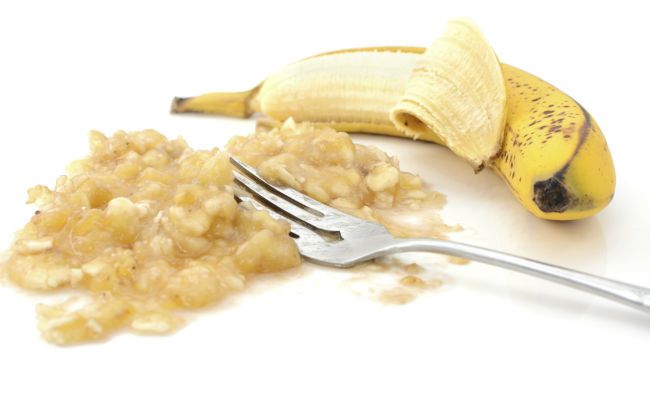
Banana and egg hair mask
- 2 ripe-overripe bananas
- 1 egg
Eggs are a source of protein and provide strength to the hair.
Coconut oil and egg mask
- 2 tablespoons melted coconut oil (your hair length and thickness is the final determinant on quantity”>
- 1 egg
Coconut oil is one of the most popular oils among naturals due to its ability to penetrate the hair shaft and strengthen hair from within. This lightweight oil also smells like a tropical paradise and has the ability to impart shine.
Have you tried any of these DIY hair mask recipes or have you mastered one of your own? Sound off below.
My thick coarse hair means hours of doing any protective style. But on the flip side, I can go many weeks–at least three or four–before my hair ever gets to the point when I need to wash it.
I am a coarse haired natural and I love it. Do I ever get frustrated? Heck yeah.
But after five years, I’ve figured out how to take the good with the bad. Here’s my story.
I went natural after a short transition a little over five years ago; I had recently given birth to my daughter and I began to realize that loving myself as I naturally am is the best way to ensure she does the same. So I went natural. I did all the research and the YouTube bingeing you could imagine and it did help. Still, being natural has taught me many lessons. One of those lessons is that there’s nothing that prepares you for your texture like dealing with it. There’s no substitute for the experience of caring for your own unique hair.
I am a type 4 natural with a mix of unyielding coils, curls and kinks. But that’s not the important part.
At least not in my eyes. What matters is that my hair is coarse, thick, and full. Unless using a stretching technique, it’s nearly impossible for me to get it into a relatively smooth ponytail because I can’t get it all to fit in my hands. But I love that–I think it’s a good problem to have. My thick coarse hair means hours of doing any protective style. But on the flip side, I can go many weeks–at least three or four–before my hair ever gets to the point when I need to wash it.
I learned to love my hair by thinking about all the positives.
I have a full head of thick hair. My hair never seems to get weighed down by any product–I love that I can pretty much use a bucket load of castor oil, my number one favorite hair product of all time–and my hair drinks it up instead of becoming limp and greasy.
Coarse hair like mine is the driest of all hair types. The natural sebum produced by the scalp takes a longer time to travel the length of the hair and this is the reason we can extend the length of time between washes. The longer your hair is, the longer you can extend this time as well.
Not shampooing my hair does not mean I neglect my scalp.
I keep my scalp clean by focusing products on the length of my hair especially the ends when I moisturize. I also make my own DIY moisture mist with lots of great essential oils for keeping scalp feeling, smelling and looking clean. My favorite essential oils to use are rosemary, lavender, tea tree and peppermint. I add a few drops of each to water (with or without a bit of leave in conditioner”> and I’m good to go.
If you have coarse hair like mine, thick and creamy water based products are the way to go.
You want to use products loaded with moisturizing alcohols, humectants and emollients to help hair become and remain moisturized. I like to use products that include ingredients such as honey, castor oil, aloe vera, cetyl alcohol, and glycerin.
I keep my hairstyling regimen simple and low maintenance.
I love mini twists and crochet braids as protective styles and my go to everyday (quick”>style is two large flat twists going down to the back of my head. Sometimes, I part my hair in the middle and at other times I do a left side part. I can usually get three days or more from this style.
My regimen is a no fuss one. I keep my ends protected, handle my hair as little as possible and would be quite miserable if I had to go without my must have products for coarse hair, which are: Castor Oil, SheaMoisture Curl Enhancing Smoothie, and Oyin Handmade Hair Dew.
[prodmod]Do you embrace your coarse natural hair?
You hear about Omega-3 fatty acids all the time, but what are they?
Omega-3 fatty acids are unsaturated fatty acids that are necessary for the body to function. According to the medical professionals of Physicians Committee for Responsible Medicine, they are one of two groups of essential fatty acids, the other one being omega-6. They are called ‘essential’ because they are key in a properly functioning body, although our bodies are unable to actually manufacture them. Since the body is unable to synthesize omega-3s we have to obtain these essential nutrients through our diet or by taking supplements.
What Omega-3s can do for your body
At the cellular level, omega-3 fatty acids help to make up the cell membrane, which is the gatekeeper of the cell. Its function is to regulate what enters and exits the cell. A proper functioning membrane will allow necessary nutrients into the cell, allowing waste to pass out of it and protect the cell from attack by keeping foreign bodies out. European Food Information Council says omega-3s are the basic components from which other substances that controls the body’s inflammatory response and blood pressure are made. Not only do omega-3s reduce inflammation, they also help to reduce the risk of chronic conditions such as cancer, heart disease, and arthritis.How to incorporate Omega-3s into your diet
Sources of omega-3 fatty acids include fatty fish such as sardines, salmon, herring and herring among others. It is recommended that these sources be included in your diet at least twice each week, according to researchers at the University of Maryland Medical Center. Fish isn’t the only source of omega-3s however.
These plant and nut extracted oils are also good sources of omega-3 fatty acids, too
Flaxseeds, walnut, walnut oil, canola oil, soybean oil, pumpkin seeds are examples of these. Below is a summary of some of the benefits of omega-3s.
How they benefit the hair
When it comes to healthy, shiny hair, you get out what you put in. This means that proper nutrition is key for healthy hair, and fatty acids help to promote hair growth, as well as add sheen and luster to hair. Proper amount of omega-3 in your diet prevents dry, itchy, flaky scalp and is beneficial in reversing hair loss.
How they benefit the skin
A balanced diet is essential for glowing skin. As they reduce inflammation, omega-3 fatty acids can improve the appearance and feel of skin. Omega-3s also function as moisturizers from within ensuring healthy skin that is clear, supple and free of wrinkles. Omega-3s may also help to improve skin conditions such as psoriasis and reduce UV ray sensitivity. However, this is no excuse to skimp on using sunscreen!
The heart
According to the National Institute of Health, a diet rich in unsaturated fats–such as omega-3s–is the best way of preventing heart disease. High blood pressure and high cholesterol are two of the risk factors for heart disease and the risk of these conditions are also lowered by diets rich in omega-3 fatty acids. The risk of getting a stroke also decreases when people eat at least two servings of fish on a weekly basis.
The brain
Research suggests that omega-3 may protect new moms against postpartum depression and depression sufferers who took omega-3 fatty acids in addition to their anti-depressants had better symptom improvement than those on antidepressants alone.
Sufferers of dementia, bipolar disorder, and schizophrenia may see improvements in their symptoms–less frequent mood swings, for example”>–when omega-3 supplements are taken. Studies on the subject, however, have yielded conflicting results. Omega 3-s are believed to protect against Alzheimer disease and dementia as research has shown that reduced intake of omega-3s is linked to an increase in risk of age-related cognitive decline/dementia which includes Alzheimer disease.The eyes
Macular degeneration is an age related condition of the eye that can lead to blindness. People who eat more fish and have diets rich in omega-3s are less likely to develop this condition.
Personal growth and development
We know that omega-3s are essential for proper growth and development. Studies have shown that during pregnancy omega-3s are important for proper brain development of the fetus and one study has found that children with low omega-3 levels had difficulty reading.
Higher IQs in children have been linked to higher levels of maternal omega-3 consumption during pregnancy. ADHD in kids may also be improved by increasing omega-3 intake.
Cancer prevention
The risk of colon cancer, breast cancer and prostate cancer is believed to be less in people (Eskimos, women and men in that order”> who have diets rich in omega-3 essential fatty acids.
Menstrual cramps
One study linked the intake of omega-3 fatty acids supplements with a reduction in menstrual pain.
With such a long list of benefit in every area of health and well-being, the fact that many of us do not meet the recommended intake of omega-3s is quite unfortunate, says the Meg-3 site. Just look at all the benefits that we’ve been missing out on. Luckily, we can take action now by making small adjustments our diets. Should you decide that supplements are the way to go then be sure to discuss this with your doctor. Time to glow!
Photos courtesy of Beyhan Yazar at Getty Images and @sgrx on Instagram
I knew Winnipeg would be…cold.
However, being Jamaican born and bred, my concept of cold was far from the Canadian experience. Winnipeg gets colder than you can imagine, unless you can imagine -35oC. I couldn’t. Prior to moving to Canada, tropical temperatures of above 30oC were my day to day norm. Anything approaching 20oC was unbearable for me and I abhorred air conditioning. Since Jamaica is warm and humid, stretched styles never stay stretch for long and shrinkage was real.
Natural hair products are readily available in Jamaica.
There are a number of quality brands–from Jamaica and elsewhere–that are available on the ground. Shipping products from the US is also very easy if you’re in Jamaica. In addition, to ease of access to quality natural hair products, Jamaica also has quite a few hair meetups and expos that help make a natural hair journey that much more enjoyable.
Months before my move to Canada, I started hoarding hair products.
I had done some online research but still couldn’t figure out what the natural hair scene would be like in Winnipeg, so I figured I’d better come prepared. I didn’t want to have to worry about taking care of my hair or my six-year-old daughter’s hair while we were adjusting to our new environment–it’s a good thing I did.
I quickly realized the natural hair scene was barren here in Winnipeg.
Most of the women with natural hair seem to wear braids more often than not. There were no beauty supply stores anywhere. Sometime later, I came across a Sally Beauty supply store–but still, the selection of products for my type 4 hair is sparse. I realized their online store didn’t ship one of my fave brands, SheaMoisture, to Canada. In addition to that, some online retailers on Amazon.ca try to offer a single Curl Enhancing Smoothie for $70! Needless to say, things did not appear very promising in the beginning.
My new environment wants my natural hair to be dry.
As I mentioned before, Winnipeg is cold. This has resulted in my hair experiencing less shrinkage, thus shortening my detangling time because my hair tangles less. But I also have to be diligent about moisturizing at least twice each day.
Being a lazy natural has actually worked to my advantage in protecting my hair from this cold climate. I wasn’t always a lazy natural, but as my hair has grown longer, I find that I spend less and less time on styling.
How my wash day has changed
On wash day I do the whole shebang: pre poo, wash, deep condition once a month.
I keep my hair mostly in medium-sized twists that I wear in a ponytail, I really don’t have time to do more than that because I have my daughter’s hair to maintain as well as well as all the duties that come with taking care of a household and holding down a full time job.
I couldn’t figure out what the natural hair scene would be like in Winnipeg, so I figured I’d better come prepared.
When going to work my head is always covered for warmth and many times my hair is covered indoors as well. Working as a paint chemist in an industrial manufacturing environment means jeans and t-shirts under a lab coat and head gear is not frowned upon. That’s been a huge relief because in Jamaica, I was still required to dress like the administrative office staff, which means I had to be more concerned about my hairstyle. There, a beanie would not have met with the dress code, but now I can pretty much roll out of bed, put a beanie or a wool cap over my satin cap, and go.
I’ve kept my hair healthy and moisturized the first six months in Winnipeg by doing the following:
-
Washing less frequently–on average every 3 to 4 weeks
-
Consistent deep conditioning–I deep condition with every wash
-
Moisturizing twice daily.
-
Reduced manipulation–I style my hair no more than twice week.
-
Wearing protective styles and covering my hair to protect it from the cold climate.
How did you adjust to a different climate with natural and curly hair?
Slip is everything. Slip is life.
Every curly girl knows that when it comes to conditioners. Slip in a product refers its lubricity, i.e. its ability to reduce friction so that strands of hair can slide past each other (instead of becoming tangled”> and detangling tools can pass through the hair with relative ease. The amount of slip a product provides is an indicator of how easily knots and tangles will become undone when you slide a comb, brush or fingers through the hair after you’ve applied that particular product.
A conditioner with lots of slip will lessen the amount of time it takes to detangle your hair and allow for detangling to be achieved occur with less damage to the hair. Conversely, little to no slip will increase the amount of time required to undo tangles and knots, increase damage to hair. This is particularly important for those of us with textured hair.
When trying to determine if a particular conditioning product is likely to have slip there are a few key ingredients to look for. Some of these ingredients are vegetable oils and butters, fatty alcohols, hydrolyzed proteins and detangling herbs such as slippery elm and marshmallow root.
1. FATTY ALCOHOLS
- they release existing tangles and prevent new ones from happening
As a general rule, curly girls avoid alcohol containing hair products as they may dry the hair out making it brittle and prone to breakage. Drying alcohols are small alcohol molecules that tend to evaporate quickly. Think of the alcohol swab they use to clean your arm before an injection or rubbing alcohol your mom used to rub on your skin to help bring a fever down. Fatty alcohols are much larger molecules and do not volatilize at a fast rate. Their larger molecular sizes give them an oily, slippery feel which in turn provides the slip to your favorite conditioner. Fatty alcohols are emollients, which means they have the ability to soften skin and hair. This property makes fatty alcohols a common ingredient in conditioners and lotions. The most common fatty alcohols are stearyl alcohol, cetyl alcohol and cetearyl alcohol. Fatty alcohols coat the strands and hold the cuticle flat to create a smooth surface. This helps to release existing tangles and knots and prevent the formation of new ones during the detangling process, according to The Natural Haven Bloom.
2. VEGETABLE OILS & BUTTERS
- they smooth the cuticles and reduce friction during detangling
Vegetable oils such as olive oil and coconut oil and butters such as shea and cocoa butters are great at coating strands, smoothing the cuticles and allowing strands to slide past each other with reduced friction, according to Science-Y Hair Blog. This reduction in friction makes it possible for strands to slide past each other causing knots and tangles to become undone and making it unlikely that new tangles will form while the hair is being detangled.
3. HYDROLYZED PROTEINS
- they fill in the gaps of raised cuticles and easily absorb into the hair
Hydrolyzed proteins are proteins that have been split into smaller units by the process of hydrolysis. Hydrolysis is a type of chemical reaction in which water is used to break bonds within a molecule. Since hydrolyzed proteins have been broken into smaller molecules they are easily absorbed into the hair strand filling in gaps and smoothing the cuticle layer. Smoother cuticles reduce the risk of knots and tangles being formed as the cuticle sheets are closed and so not able to snag onto raised cuticle sheets from neighboring strands. Types of hydrolyzed proteins to look out for are hydrolyzed silk protein, hydrolyzed wheat protein and hydrolyzed soy protein.
4. DETANGLING HERBS
- they soothe the scalp and coat the hair strands for better conditioning
Detangling herbs such as slippery elm, flaxseed and marshmallow root are popular ingredients in detangling products because of their ability to add slip and smooth and condition the hair, according to My Natural Hair Growth. These herbs are able to form thick gelatinous substances that coat the hair strands and allow fingers, brushes and combs alike to glide right through the hair. In addition to adding slip these herbs can also soothe the scalp, soften and moisturize hair.
Does slip matter to you?
If you’ve been looking for a way to shorten your detangling sessions that be on the lookout for products containing the ingredients we’ve mentioned above and if you’re feeling adventurous some homemade detangling sprays utilizing the herbs above are a definite must try.
To dye or not to dye while pregnant? That is the question!
Being pregnant is a unique experience for every woman. It’s a time of change–emotional and physical highs and lows. With all the changes you go through, you may feel a burning desire to exert some control. If you’ve become used to dying your hair regularly, you may want to continue with this part of your beauty regimen. If you’d never dyed your hair before, you may think of it as a way to boosts your spirit, a way to have a bit more power over your appearance as your body continues to change.
Will dyeing your hair pose a risk to your unborn child?
Thought it is limited, there is scientific data regarding the safety of dyeing your hair while pregnant. There is at least one study by Baby Centre UK that suggests that using hair dyes during pregnancy may result in neuroblastoma, a rare childhood cancer, however the bulk of the existing research does not support that finding. American Pregnancy have conducted animal testing that suggests there is no risk to your developing child if you choose to dye your hair. The general consensus is that the concentrations of potentially harmful chemicals found in hair dyes are too low to pose any harm to you or the developing fetus especially where skin (scalp”> contact is avoided. For this reason, processes such as streaking, highlighting and frosting are more widely encouraged than full color coverage, according to Baby Center.The general consensus is that the concentrations of potentially harmful chemicals found in hair dyes are too low to pose any harm
Your hormones may affect the chemicals’ ability to work
Years ago when I was pregnant with my daughter, I was still relaxing my hair–I went natural after her birth. I remember going to the salon twice during my pregnancy and both times, I left with hair that had refused to take the relaxer. I learned that my pregnancy hormones had affected my hair to the point that it no longer responded to those chemicals. Even my first postpartum attempt at relaxing my hair did not work. The fact is that pregnancy alters the hair. It can change its density and texture as well as how the hair responds to chemicals. It is impossible to say how and if your hair will be affected but it is worth considering when trying to decide if you want to take the step and color your hair.
The fact is that pregnancy alters the hair. It can change its density and texture as well as how the hair responds to chemicals.
Take the following precautions when dyeing your hair
If you have chosen to dye your hair while pregnant, incorporate these tips into your coloring routine (many of them apply beyond pregnancy”>.
- Delay dyeing for as long as you can. Second trimester is good. Third trimester is even better.
- Use exactly as directed.
- Do a patch test to make sure you’re not allergic
- Ensure the area you dye your hair in is properly ventilated
- Protect hands by wearing gloves
- Ensure you rinse all traces of chemical from your hair
Is there a safer alternative to chemical hair dye?
Vegetable dyes with a henna base are considered safer alternatives for changing your hair color. Ammonia is one harmful ingredient that you want to avoid at all costs, so pay close attention to the contents of any hair color you use to ensure you know exactly what you are getting.
As always, consult your primary doctor and do research before making a change. Should you decide to go ahead and change up your hair color, visit a licensed hairstylist and colorist to discuss the potential options.








